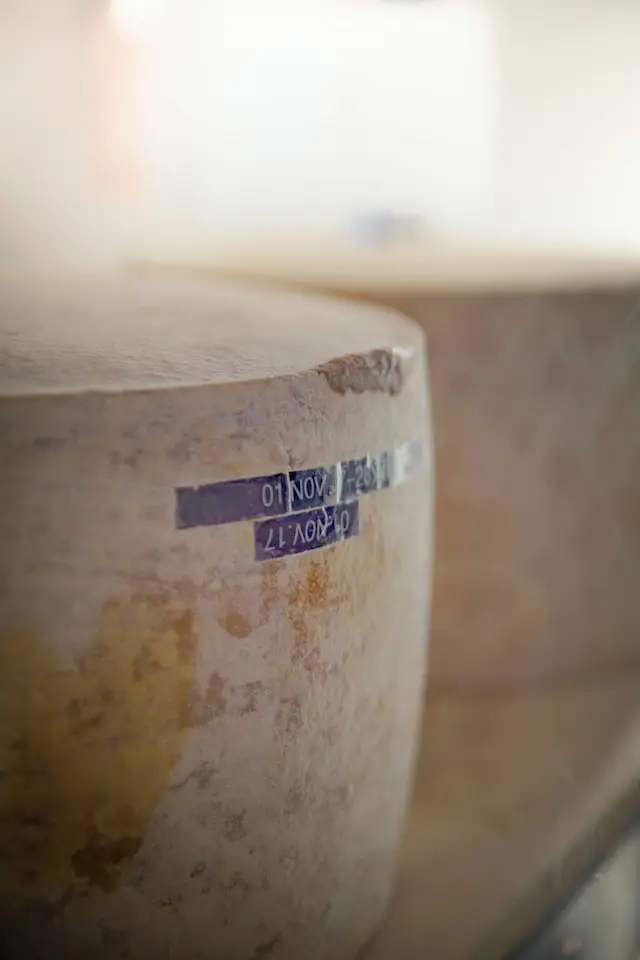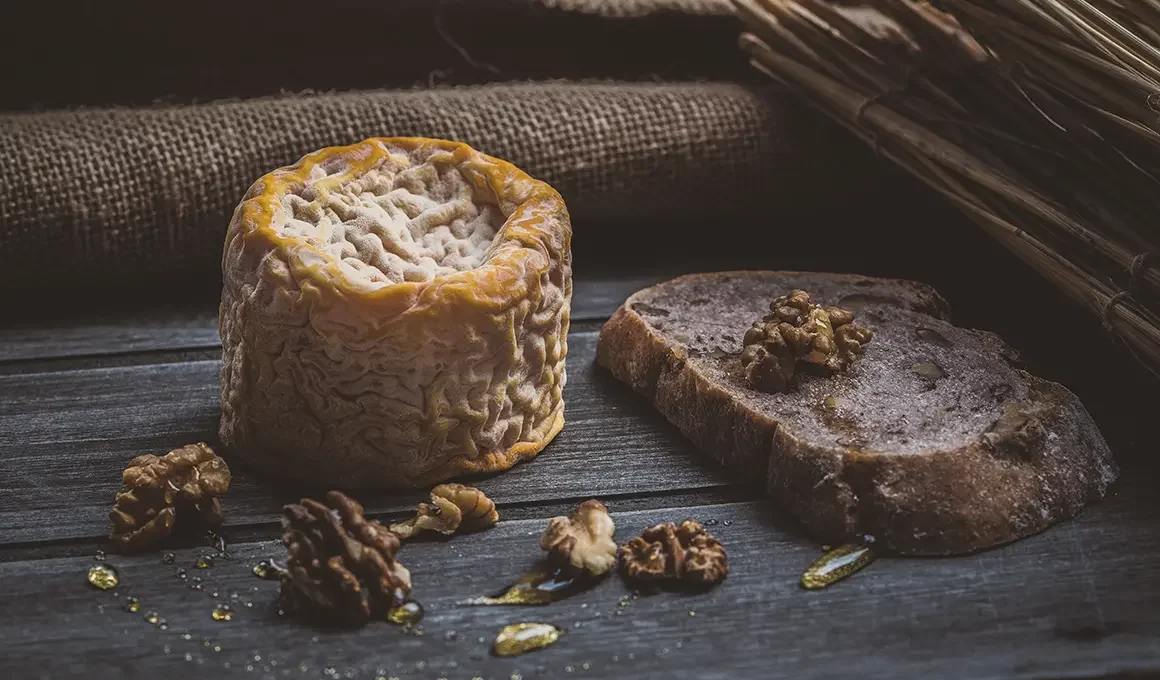It seems that almost every village in Chania, has its own signature cheese. The Cretan Cheeses are usually made from sheep or goat’s milk, or a mixture of both and each cheese variety has its own well-kept secret. Of the legion of delicious cheeses, look for graviera, a harder cheese that’s sweeter when new, but nutty and flavorful after aging. Soft, creamy cheeses, abound like pichtogalo Chanion, which has AOC protection, or myzithra, a young whey cheese with a beautiful mild taste.
Table of Contents
Pichtogalo Chanion PDO
Pichtogalo Chanion is a white soft cheese, without skin and holes. The consistency is thick and creamy, similar to yogurt. The flavor is full and buttery, with a delicate, fresh and slightly acidic aroma. In the marketed versions it is usually pasteurized and has a relatively short expiration date as its flavor is easily altered.
Pichtogalo, formerly known as Galomyzithra, acquired its new official name in 1994 when the Protected Designation of Origin was recognized to electively protect the originality and authenticity of the magnificent Cretan Cheeses. It is a cheese traditionally produced in the prefecture of Chania on the island of Crete. It differs from other Xinomyzithra produced on Megalongo Island in terms of the raw material used.
While the Xynomyzithra that is usually found on the market is obtained from the whey left over from the processing of other cheeses (Graviera, Kefalograviera) with the addition of a small amount of milk, Pichtogalo is real cheese since it is produced only with goat’s milk and / or sheep. To underline this difference, the people of Chania also call it Galomyzithra (from the Greek γάλα = milk).
The craftsmanship begins with the coagulation of raw milk at a temperature of 18-25 ° C, which takes place in about two hours, with the help of traditional rennet. At the end of the process, the curd is left to acidify for another 24 hours. Subsequently, the cheese moves into cloth sacks or gauze for drainage. About 1% of salt is added to the drained curd. At this point, it is ready for consumption.
As for conservation and ageing, the Pichtogalo Chanion is stored in containers, such as barrels or milk, covered with brine. The storage temperature must be fresh and constant. Since ancient times there are references to the art of cheese production, defined by the Greeks as a precious gift given by the gods to mortals.
Nutritional Data
| PER 100G | PER PORTION(30G) | |
|---|---|---|
| ENERGY | 198Kcal/1829kj | 59.4Kcal/548.7kj |
| PROTEINS | 11g | 3.3g |
| CARBOHUDRATES | g | 0g |
| of which sugars | 2.3g | 0.69g |
| TOTAL FAT | 16.3g | 4.89g |
| of which saturated | 5.29g | 1.587g |
| FIBERS | 0g | 0g |
| SALT | 1.4g | 0.42g |
| SODIUM | 0g | 0g |
A quick trip to Chania will have you looking at that cheese board with a fresh eye. One thing is for sure. Cretans LOVE cheese. There is plethora of Cretan Cheeses. Cheese for breakfast, cheese for lunch; cheese with rusks for extra crunch. Cheese is a massive part of the Cretan diet and they know just how to make it, eat it, and of course pair it.
Xynomyzithra Kritis – PDO
Xynomyzithra Kritis (Greek: Ξινομυζήθρα) is a soft cheese made with whey from Graviera or Kefalotyri Kritis and a mixture of goat’s and sheep’s milk. The proportion of full-cream milk is about 15%. The mixture is set to “sour” at room temperature for 24 hours. When served as is, it has a sweet and sour taste. When cooked in pies, its texture becomes softer and the flavour milder. Xynomyzithra Kritis is a European-protected designation of origin.
Xynomyzithra Kritis is also included in the group of whey Cretan cheeses and consists of the main ingredient of some of the most famous Cretan pies such as myzithropita and sarikopita. It is also an accompaniment to Cretan Dakos (Ntakos) and many other traditional dishes.
Texture and Color: It is characterized as a soft and creamy white cheese with grains in its mass and of indeterminate shape.
Taste: It has a dry and brackish taste.
Nutritional Data
| Energy / Calories: | 1077 kJ / 260 kcal |
| Fat: of which: | 21.2 g14.9 g |
| Carbohydrates: of which: | 2.1 g1.9 g |
| Protein: | 15.1 g |
| Salt: | 1.9 g |


Anthogalo
Anthogalo is an ancient Cretan cheese, according to the legend made first by Polyphemus – a one-eyed giant, one of the Cyclopes described by Homer in the Odyssey. It is made with boiled sheep’s milk curded with yoghurt and rennet (pythia) mixed in the boiling milk with a wooden spoon.
The foam of the milk rising while boiling is strained through a cloth and left to harden for a few days in a cool, dark place. When ready, it is placed in a jar and refrigerated. It is served on rusks, baked potatoes, omelettes, pasta, risotto, and many other dishes. It has a pleasant, creamy texture, with a slightly milky-sour aftertaste.
Nutritional Data
| PER 100G | PER PORTION(30G) | |
|---|---|---|
| ENERGY | 246Kcal/1029kj | 73.8Kcal/308.7kj |
| PROTEINS | 1g | 0.3g |
| CARBOHUDRATES | g | 0g |
| of which sugars | 0.3g | 0.09g |
| TOTAL FAT | 27.3g | 8.19g |
| of which saturated | 17.9g | 5.37g |
| FIBERS | 0g | 0g |
| SALT | 0g | 0g |
| SODIUM | 0g | 0g |
Malaka (Tyromalama)
Malaka or Tyromalama is a soft and sweet gem of a cheese that mostly resembles a mozzarella. Made from sheep milk in the first process of making graviera. It is a curd cheese with a soft, light texture and creamy taste. Often used as the ideal pizza topping. In Crete, it’s the main ingredient of kalitsounia pies, an absolute staple of the Cretan diet and not to be missed. These little pastries stuffed with cheese and herbs are extremely moreish. You’ll be forgiven for devouring a plate full.
The best time to buy malaka – one of the most popular Cretan Cheeses – is in the spring when lambs start getting ‘baggy’ filling with milk while having fewer lambs to feed it to.
Nutritional Data
| PER 100G | PER PORTION(30G) | |
|---|---|---|
| ENERGY | 296Kcal/12452kj | 88.8Kcal/3735.6kj |
| PROTEINS | 20g | 6g |
| CARBOHUDRATES | g | 0g |
| of which sugars | 0g | 0g |
| TOTAL FAT | 23g | 6.9g |
| of which saturated | 13.2g | 3.96g |
| FIBERS | 0g | 0g |
| SALT | 0g | 0g |
| SODIUM | 0.12g | 0.036g |
Graviera Kritis
Graviera cheese comes in second to feta as the most popular cheese in Greece. It’s a hard cheese with a light to deep yellow color, small irregular holes, a hard rind, and flavor ranging from slightly sweet and nutty to a bit spicy. The most common Cretan version comes from sheep’s milk or sheep’s milk mixed with a small amount of goat’s milk.
It is traditionally produced from sheep milk or from a mixture of sheep milk and a maximum of 20% goat milk. These goats and sheep wander freely on the green pastures of the island, and their diet is based on local plants, which give their milk a special quality that is expressed in this exceptional cheese. Its taste is slightly sweet and nutty. This cheese matures for 3 to 5 months before being put on the market.

As is often the case in Greece, Graviera Kritis is made mostly using sheep’s milk combined with goat’s milk (up to 20%). Moreover, the animals that produce the milk for Graviera Kritis cheese must be allowed to graze freely in the mountainous and semi-mountainous areas of Crete, where the cheese is made. This ensures that no pollutants or pesticides make their way into the milk that produces the cheese.
The other two types of Graviera that bear a PDO stamp are Graviera Naxou and Graviera Agrafon.
Nutrional Data
| PER 100G | PER PORTION(30G) | |
|---|---|---|
| ENERGY | 316Kcal/1315kj | 94.8Kcal/394.5kj |
| PROTEINS | 25g | 7.5g |
| CARBOHUDRATES | g | 0g |
| of which sugars | 0g | 0g |
| TOTAL FAT | 24g | 7.2g |
| of which saturated | 15.5g | 4.65g |
| FIBERS | 0g | 0g |
| SALT | 2.90g | 0.87g |
| SODIUM | 0.72g | 0.216g |






